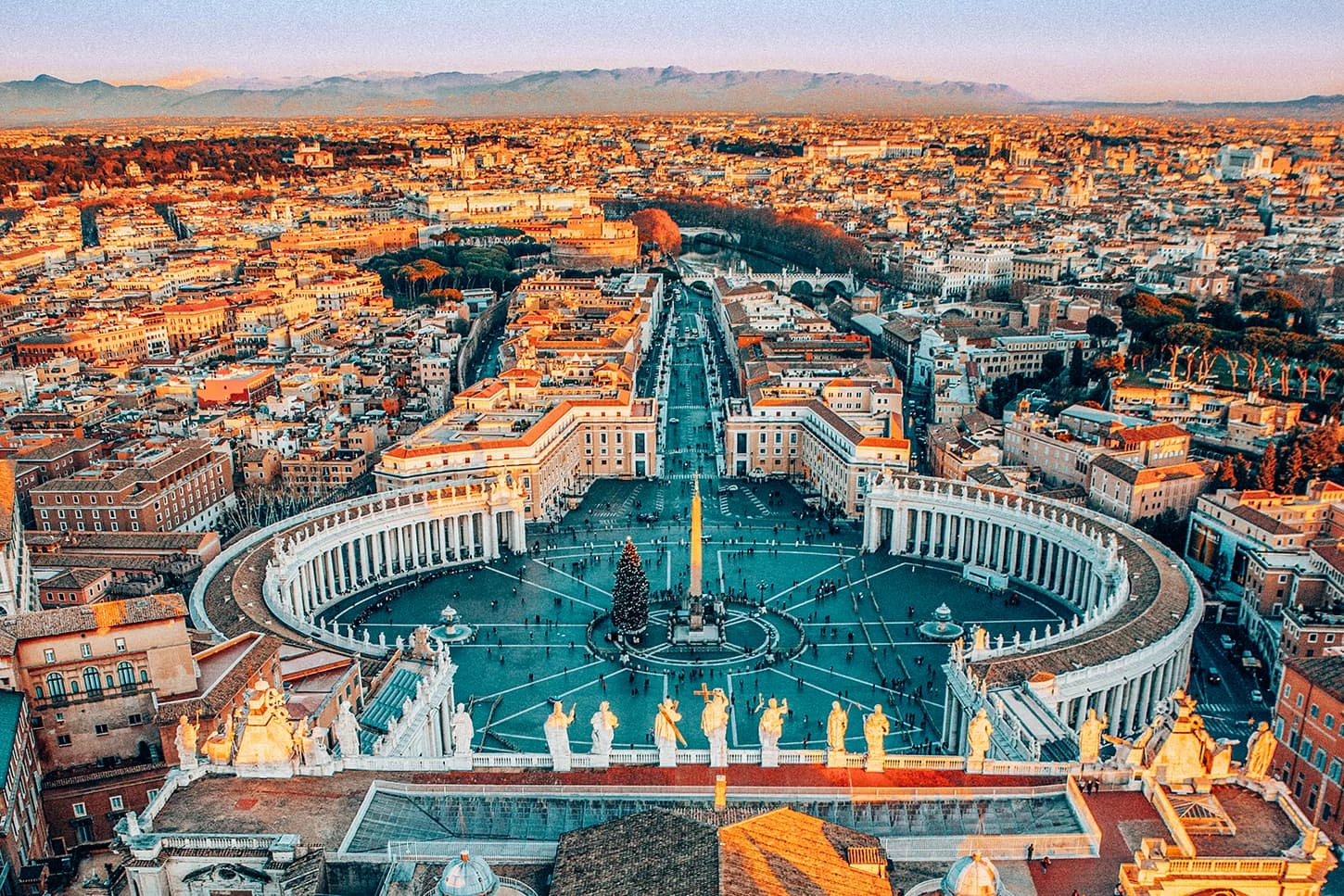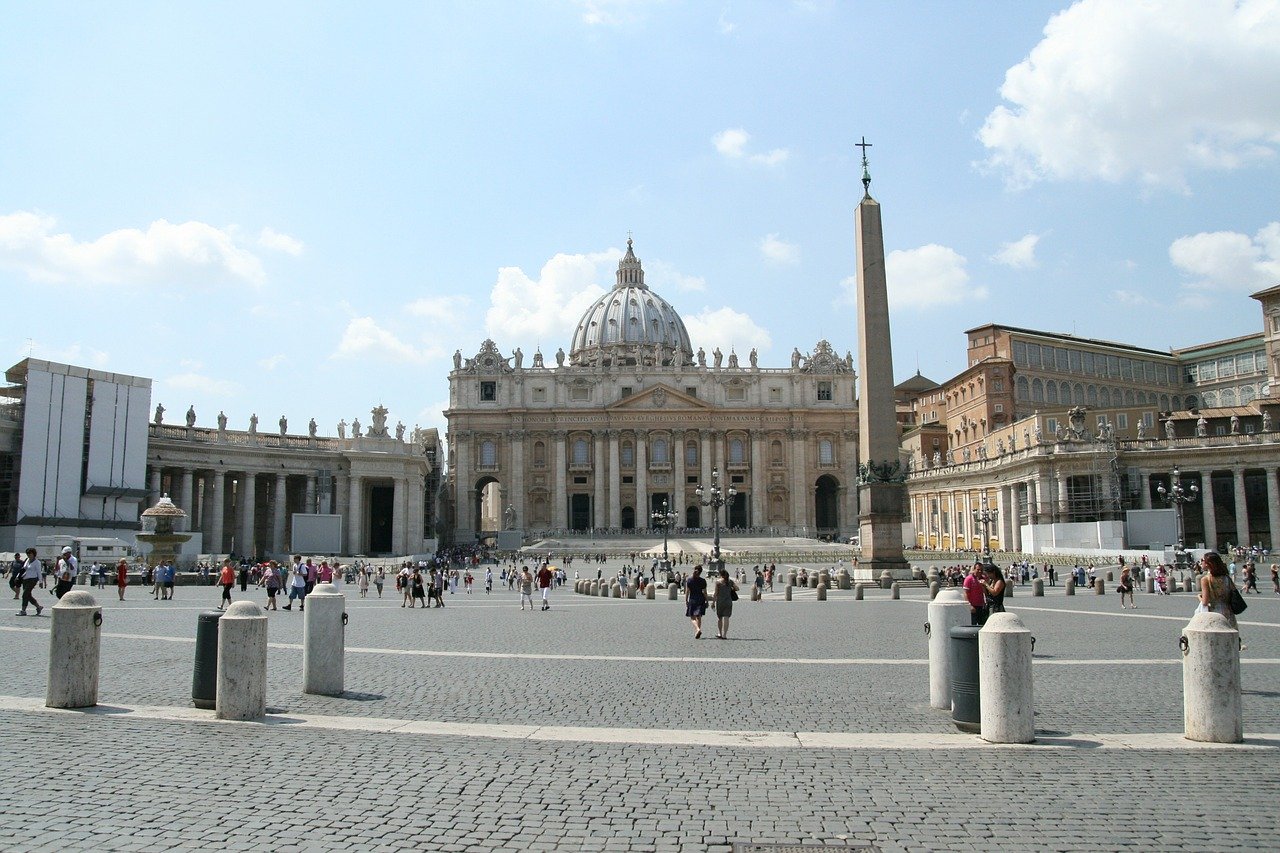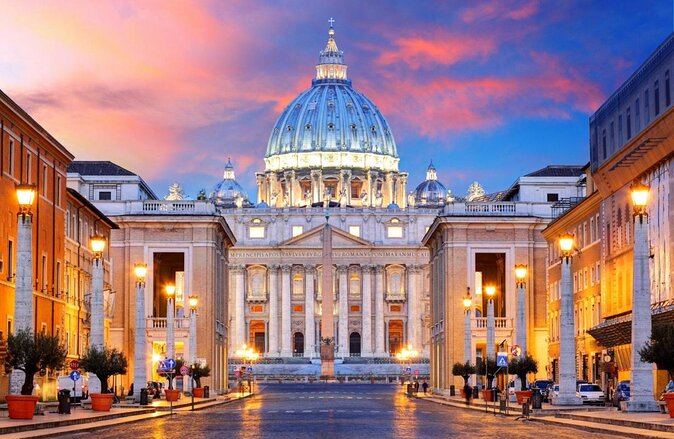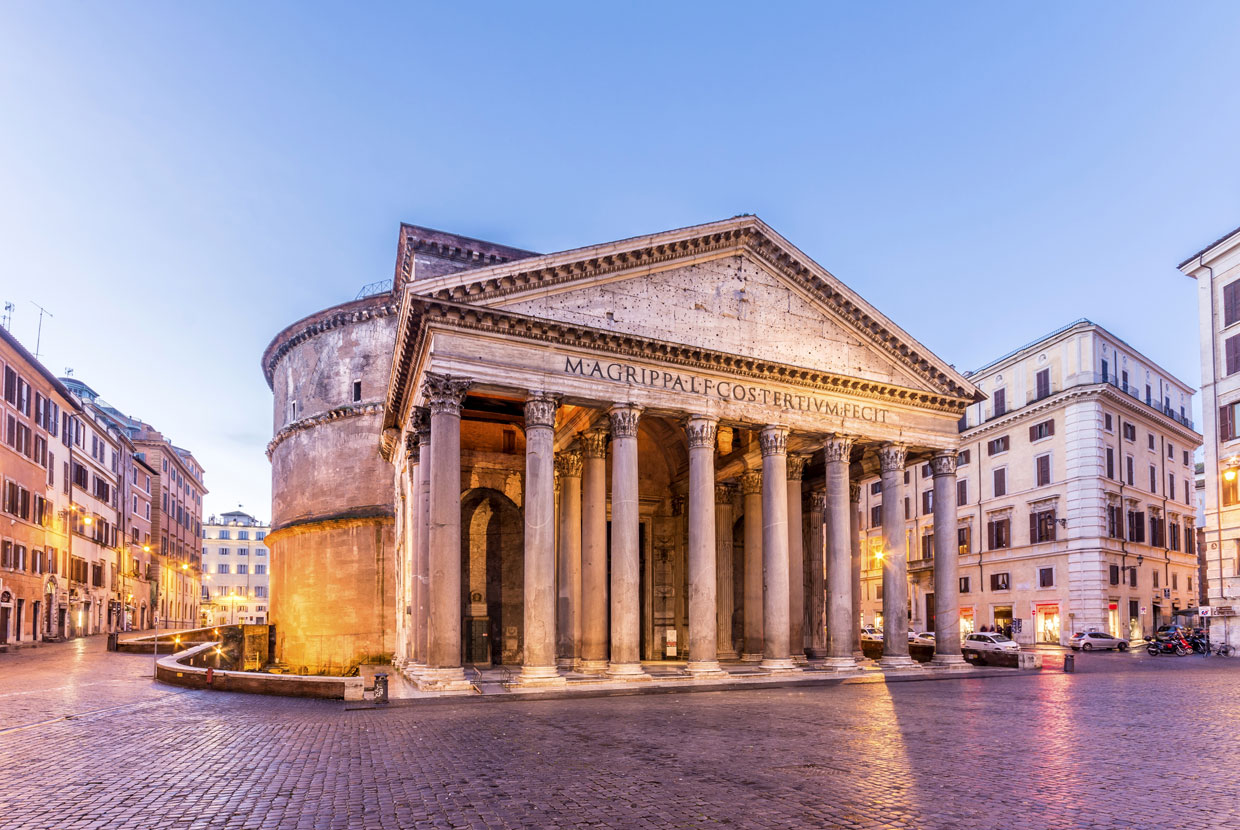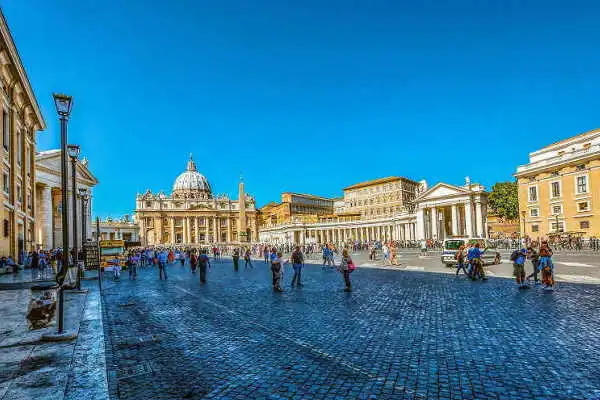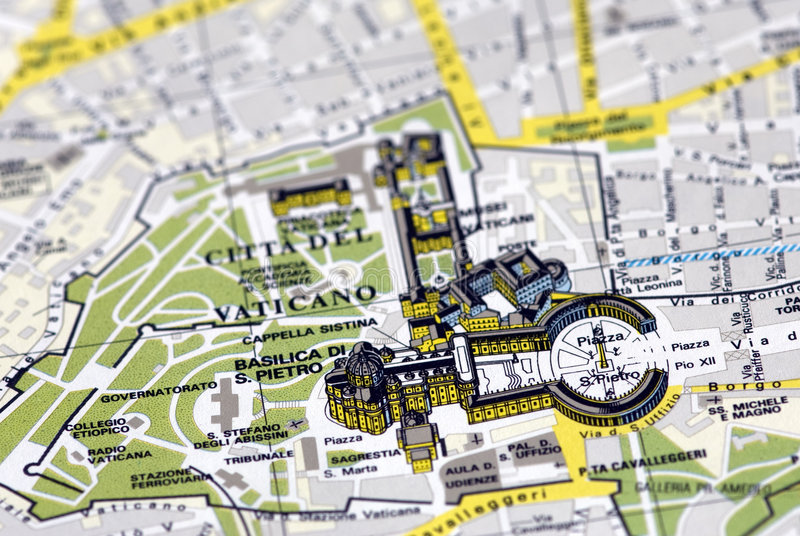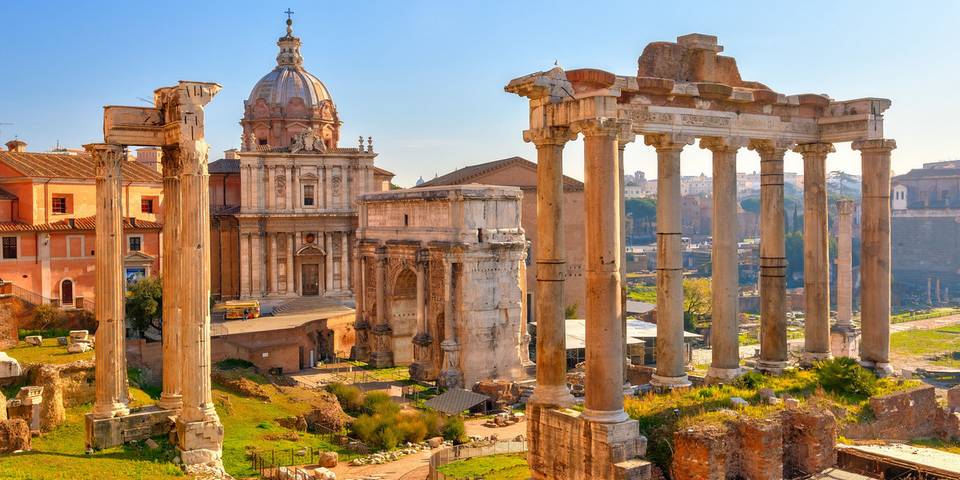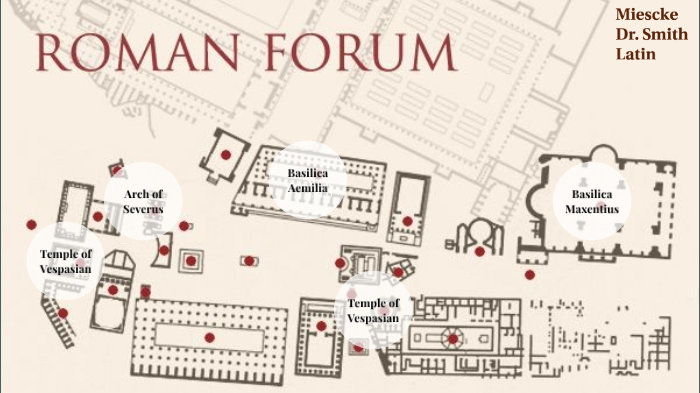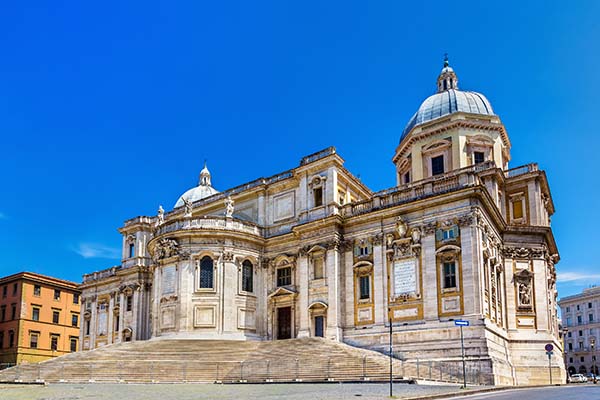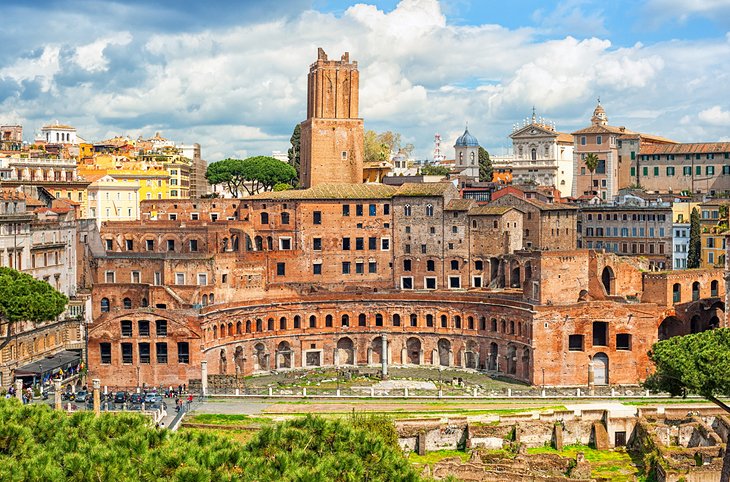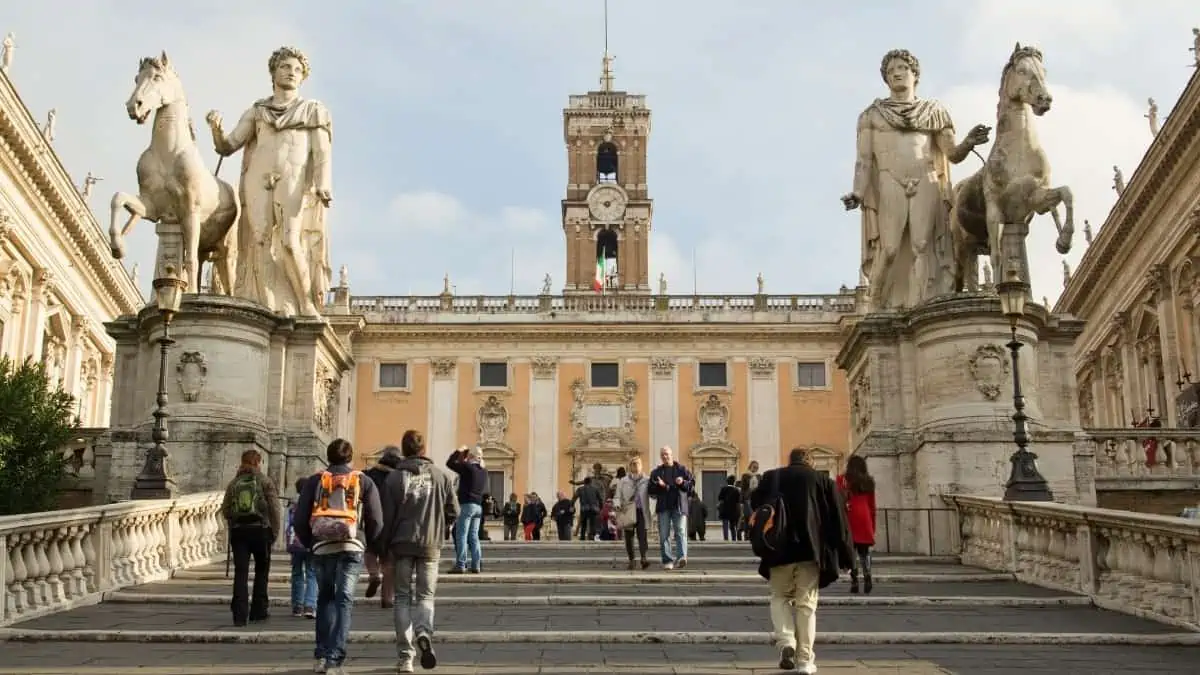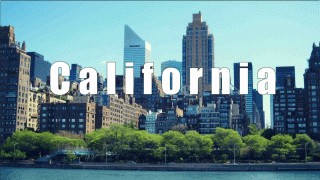- 2023
- 10
- Feb
Rome is one of the world's most beautiful and oldest cities. Rome's history extends over 2500 years and has always been a center of power, politics, culture, and progress.
The city's construction is steeped in tradition and mythology, and there are several versions of how this fantastic location came to be. Various Roman emperors controlled great Rome, and it was from here that the massive Roman Empire evolved.
The city of Rome is split into numerous districts, the most important of which is the Colosseum area, which contains the most historic attractions such as the Colosseum, Capitoline Hill, and the Roman Forum. The Pantheon, beautiful churches, plazas, and Renaissance architecture may be seen on the outskirts of the city center.
Rome is breathtaking, ancient, and full of great museums, sights, restaurants, and activities. Because Rome is so large, even the most ardent tourist should take some time to relax and enjoy la dolce vita at a park or sidewalk café.
With this handy list of the greatest attractions in Rome, you'll be able to determine the finest spots to visit.
Let’s explore the best places to visit in Rome, Italy:
1. Colosseum
This magnificent monument is one of the world's most famous and recognizable sites, and a journey to Rome would be incomplete without a visit to the Colosseum.
A popular tourist destination in Rome is the Colosseum. Vespasian, the Flavian dynasty's emperor, started work on it in 72 AD, and his son Titus finished it in 80 AD.
The circular amphitheater could accommodate up to 50,000 spectators who came to witness gladiators fight, individuals being publicly killed, and other types of entertainment. Built in the first century, this stone and concrete building was the greatest amphitheater in the Roman Empire. It is regarded as one of the finest architectural and engineering achievements of the Romans.
There is also a pokemon colosseum present in the colosseum which is the ancient theater in the world and also one of the ancient tourist destinations.
The Colosseum, also known as the Flavian Amphitheatre, was constructed between 70 and 80 AD and had a maximum seating capacity of 80,000 people.
This structure was used to host games, gladiator tournaments, and other sorts of entertainment, and it was frequently visited by Roman Emperors.
The Colosseum is conveniently located near a metro station and is only southwest of the major terminal railway station.
There is also a lego colosseum available in Italy markets.
Admire this iconic monument from every perspective, and be sure to brave the lines and get inside to properly understand the magnitude of this historic site of celebration.
2. St. Peter’s Square
This autonomous state is one of the world's most important religious locations, and St. Peter's Square is an iconic location where many momentous events have occurred.
The Piazza, which is at the entrance of the Vatican State, is really circular and is surrounded by two enormous sets of colonnades. Beautiful sculptures of various religious luminaries and former popes are placed atop these columns.
An impressive obelisk that seems more Egyptian than Roman and was really removed from Nero's Circus stands in the center.
The magnificent St Peter's Basilica lies at the far end of the plaza, and in front of it, a set of seats is normally put out for papal festivities.
3. Peter’s Basilica
The Basilica of St. Peter, the hub of the Catholic world and a prominent tourist attraction is a massive church: with an internal height of 120 meters (400 feet), the space shuttle and its booster rockets, as well as the Statue of Liberty, could fit within.
The basilica is built on the legendary spot where Peter, the missionary and first Pope, was martyred and buried. This structure's construction was finished in 1615.
St. Peter's Basilica, maybe the most famous and celebrated religious monument in the world, stands as a genuine victory to the strength and splendor of the Catholic Church, and it is regarded as one of the holiest places for its adherents. One of the most magnificent structures in the world, the Basilica has exquisite interior architecture and design.
4. The Pantheon
The Pantheon, one of the best-preserved ancient Roman temples in existence, is one of Rome's most well-known sites.
The current structure, which was completed in 118 AD by Emperor Hadrian, actually replaced an older temple that King Agrippa had ordered to be built there.
Pantheon was rebuilt, and the masonry that resulted demonstrates the exceptionally high technical competence of Roman builders. The building's nine-meter central entrance serves as the only light source and its 43-meter dome—the pinnacle of Roman interior architecture—hangs suspended without apparent supports. These are carefully hidden behind the walls.
Agrippa is commemorated on the triangular pediment of the rectangular porch at the front of the edifice, which is flanked by huge columns.
The inside includes a spectacular dome with a central coffer that lets light pass through and a succession of stone designs.
5. Vatican City
The Vatican is the shortest autonomous state in the world, with a territory that is mostly surrounded by its own walls and measuring just under half a square kilometer. St. Peter's Basilica, the Vatican palace and gardens, and St. Peter's Square are all located within. The Pope, who is the head of the Roman Catholic Church, rules over these locations. Between its museums and the enormous church itself, this little area has a lot to see.
There is also a Vatican city map below:
Pieta, a work of art by Michelangelo, as well as altars and statues by Bernini and others, may be seen inside St. Peter's Basilica. The Sistine Chapel, home to Michelangelo's beautiful frescoed ceiling, is without a doubt the showpiece of the Vatican museums.
The Vatican Palace contains the Raphael Rooms, the Borgia Apartments, the Vatican Library, and a variety of museums such as the Picture Gallery, the Museum of Secular Art, the Etruscan Museum, and others. The artifacts on display range from papal carriages to 20th-century art expressing religious themes.
6. Roman Forum
The Roman Forum is a historic complex made up of several remains that were once the hub of Roman public and political life. It is conceivably one of the most significant Roman ruins in Italy.
The temples of Saturn, Titus, and Vesta, as well as the Arch of Severus, were located here, among other squares, arches, and temples. Many of these structures are still surviving today, with portions of arches, building substructures, and walls visible. The Roman Forum, which is located near the Colosseum and the Altar of the Fatherland, is a must-see attraction.
Roman Forum map is given below:
Roman political and religious life, as well as the courts, marketplaces, and meeting places, were concentrated here. After the seventh century, the structures fell into disrepair, and churches and fortifications were constructed among the ruins. Its stones were mined for other structures, and it wasn't until the 18th and 19th centuries that methodical excavations uncovered the ancient structures behind a 10-meter layer of soil and rubble.
7. Trevi Fountain
This 17th-century masterpiece, one of the city's most prominent tourist sites, has been immortalized in films to the point where it is virtually a necessary visit. It is customary to deposit one coin (not three) into the Fontana di Trevi (Trevi Fountain coins) to ensure your return to Rome.
The Fontana di Trevi, Rome's greatest fountain, is fed by an aqueduct built by Agrippa, the renowned art patron of the first century BC, to provide water to his baths. Nicol Salvi designed and erected the fountain for Pope Clement XII between 1732 and 1751 against the rear wall of the Dukes of Poli's residence.
Now the Lego Trevi Fountain was present in Italy.
It portrays Oceanus (Neptune), the sea god, with horses, tritons, and shells. Water rushes around the figurines and artificial rocks, eventually collecting in a big basin that is always full of money.
8. Santa Maria Maggiore
Santa Maria Maggiore was one of Rome's finest magnificent cathedrals, has stood since the fourth century, when Pope Liberius got a revelation from the Virgin ordering him to build a cathedral where snow would fall the next day. Despite the fact that it was August, snow fell on the Esquiline hill the next morning, therefore the grand basilica was erected there.
Since the fifth century, every day has seen the celebration of Mass. Its 86-meter-long interior is divided into three aisles by 40 marble and four granite columns, and the apse, which was constructed in the 13th century, is decorated with Old and New Testament-themed mosaics that are the works of renowned mosaic craftsmen from Rome.
The upper walls are decorated with mosaics dating back to the fourth century, while the floor is inlaid with colorful stone in the style of experienced 12th-century artisans from the Lake Como region. The coffered ceiling reflects the first gold to arrive in Italy from the Americas. Two popes are buried here; it is one of Rome's four papal basilicas and a popular pilgrimage destination.
9. Palatine Hill
Palatine Hill is the most central hill in the Tiber region and one of the most historic ruins in contemporary Rome.
Standing 40 meters above the famous Roman Forum, it offers a great view of the city of Rome
.
The Palatine Hill, strategically located 50 meters above the Tiber, reveals traces of Rome's oldest settlement: rock cuttings discovered in front of the Temple of Cybele suggest human activity as early as the ninth century BC. Later, the emperors and powerful aristocratic families picked this location for their palaces.
The fabled twins Romulus and Remus, who later went on to create the city of Rome, are said to have been discovered here in Roman mythology.
The Temple of Cybele and the Flavian Palace are two antiquities that are still standing here today.
Palatine Hill is accessible from the Roman Forum, so be sure to climb it and explore this wonderful vantage point.
10. Capitoline Museum
The Capitoline Museums, sometimes known as "Musei Capitolini," are a group of museums on Rome's Piazza del Campidoglio that house a huge collection of sculptures, paintings, and artifacts from Rome's past.
It features the Galleria Lapidaria, which shows the Museum's collection of epigraphs, as well as in situ 2nd-century remains of old Roman homes.
The Capitoline Museums are the world's oldest museums. They date from 1471 and are located on the magnificent Campidoglio Hill. This collection got its start thanks to Pope Sixtus IV's giving of a number of sculptures of significant symbolic significance to the city of Rome.
Takeaway:
So these are the most tourist attraction in Italy. We hope you will enjoy the tour of these adorable places with excellent memories.
Thanks.
Read also New York: The City That Never Sleeps
Read also Best Gifts To Bring From Switzerland
Read also Best cities in Switzerland


